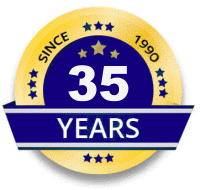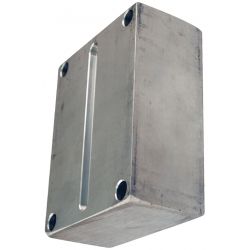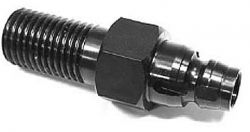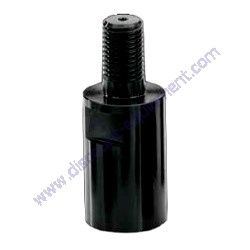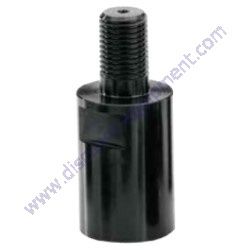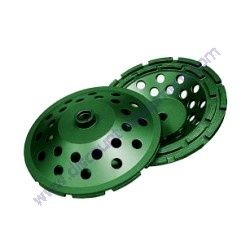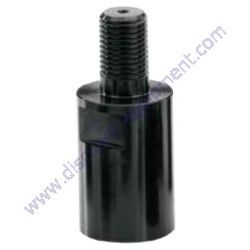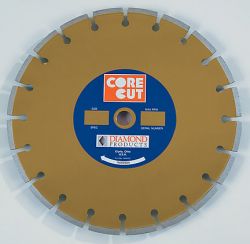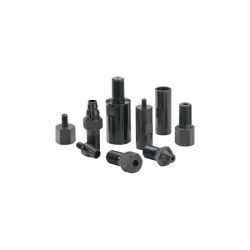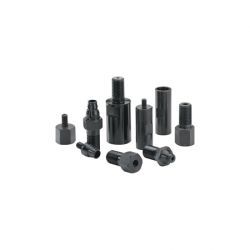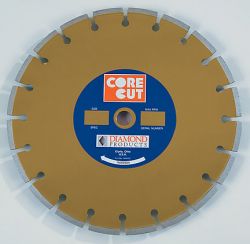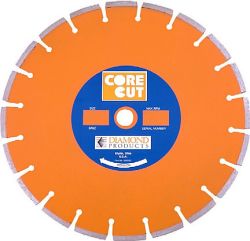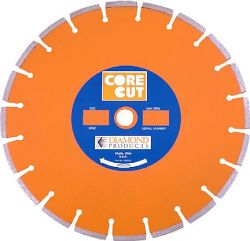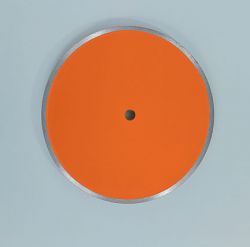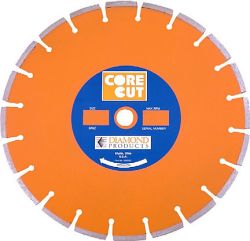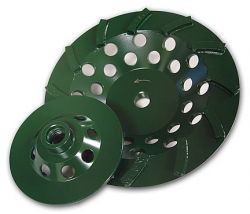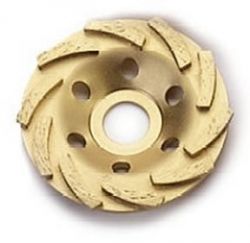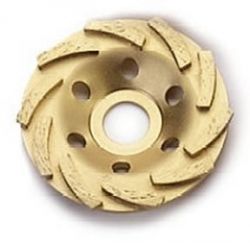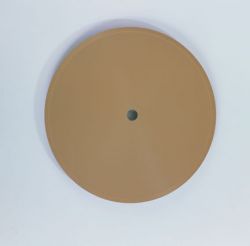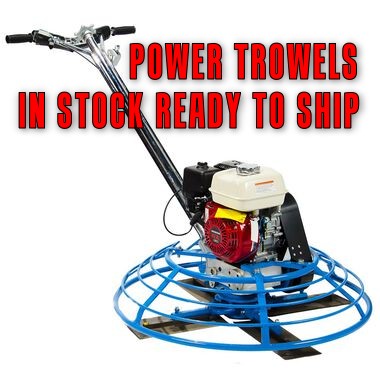Diamond Products CC1600-3.8PS Saw, Wall PKG W/Tracks, Guard, Track Stiffened And Steel Track Feet 5800931 c/n 78128
Safety Information
Diamond Products CC1600 Wall Saw
SAFETY
Your Diamond Products CC1600 wall saw has been designed to be as safe and efficient as possible. However, wall sawing can be hazardous if proper safety precautions are not taken and operating instructions are not followed carefully. Study this manual and remember all warnings, cautions, and tips. Keep a copy of the manual near the job site to allow the operator to review any section as needed.
SAFETY WARNINGS
PERSONAL SAFETY
• Read and understand instructions before operating saw.
• Wear proper safety clothing, including hardhat, respirator, gloves, and safety glasses.
Avoid loose fitting clothing.
• Sturdy boots with non-skid soles aid in providing proper footing. Steel-toed safety boots are recommended.
• Cutting steel reinforcing bar produces sparks, avoid clothing of flammable material.
• Know how to stop the saw quickly in an emergency.
• Noise levels can be very high. Wear OSHA-approved hearing protection at all times while the saw is operating.
• Keep all parts of your body away from the blade and all other moving parts.
• Be sure that the blade guard is the correct type (flush cut or standard), is set to protect the operator, and is mounted securely on the saw.
• Do not operate the wall saw if you are under the influence of drugs or alcohol.
BLADE SAFETY
• Inspect the blade carefully before use. The blade should have no cracks, nicks, or flaws. The arbor hole should be undamaged. Use only steel centered wet cutting
diamond blades manufactured for use on wall saws and recommended for your saw.
• Do not use dry cutting diamond blades, high-speed steel blades, carbide tipped
blades, or abrasive blades.
• Only use blades marked with a maximum operating speed higher than the blade shaft speed.
• Cut only stone, concrete, reinforced concrete, and masonry materials. Do not cut materials such as wood, glass, or plastic.
• Inspect flanges for damage, excessive wear, and cleanliness before mounting the
blade. The blade should fit snugly on a clean, undamaged shaft.
• Hydraulic power units are designed with the ability to vary the blade speed. Never operate the saw at a speed higher than the maximum safe allowable speed indicated on the blade. If you are unsure of the operating speed, contact Discount-equipment.
• Always keep the blade guard in place, seated firmly on the blade guard support.
• Avoid getting in direct line with the blade.
GENERAL SAW SAFETY
• Never leave the saw unattended while running.
• Do not exceed the rated pressure of hydraulic components. If you are unsure, contact Discount-equipment.
• Ensure that the track is securely mounted to the wall, with the track stop bolts in place, before starting the saw. (Track assemblies with stiffener only)
• Verify that the saw is operating properly before cutting. The track rollers must be adjusted properly and rotating freely. The motor must be connected to the power unit to rotate the blade in a clockwise direction (facing the saw from the blade). The blade must be properly mounted in the flanges. The guard must be in place and set to protect the operator. All saw functions should be checked before mounting the blade.
• Set the blade guard to give maximum protection for the operator. Inspect the blade guard frequently for damage, cracks, and wear.
• Never operate the saw without sufficient water flow to cool the blade and flush out cutting debris.
• Always disconnect the power unit before servicing the saw.
• Never try to connect or disconnect the power unit while the power unit is running and/or the hoses are under pressure.
• Before cutting, be sure that there are no electric, water, or gas lines in the area you are working. Do not saw if you are unsure of the presence of utility lines in the work area.
• The cut out section can be very heavy. (For example, a 3’ x 7’ door cut from a 12” thick wall will weigh over 3000 lb.) Be sure that the slab is properly secured before making the final cut.
CUTTING/WORK AREA SAFETY
• Never operate the saw in any application or job where you are not properly trained or supervised.
• Operate only in well-ventilated areas.
• Place barricades or tape to block off the work area on both sides of the wall. Keep bystanders, animals, and unnecessary equipment out the work area.
• Do not operate the saw near combustible material or fumes. Sparks occur during
sawing that may cause a fire or explosion.
FAILURE TO COMPLY WITH THE PRECEDING WARNINGS COULD RESULT IN SERIOUS BODILY INJURY. | 